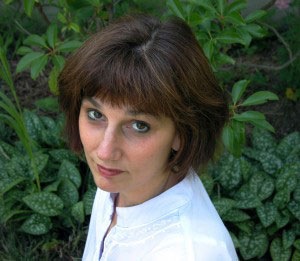Mira Bartok

A reading by UMass alumna and author of
The Memory Palace who has risen to the top with rave reviews from all the major national critics
October 25, 2011 7pm
Augusta Savage Gallery
“Even now, when the phone rings late at night, I think it’s her. I stumble out of bed ready for the worst. The last time my mother called was in 1990. I was thirty-one and living in Chicago. She said if I didn’t come home right away she’d kill herself.”
So opens Mira Bartók’s stunning and powerful literary memoir The Memory Palace (Free Press; January 11, 2011). A piano prodigy in her youth, Mira’s mother Norma’s severe case of schizophrenia created a hellish upbringing for her and her sister. When they were young, Norma neglected the girls, and they were forced to make do on their own. As the girls entered their teenage years, Norma’s illness grew progressively severe – she tried to be a loving mother, but her illness made it impossible.
Mira Bartók’s original paintings of her “memory palace” appear throughout the book, as do passages from her mother’s letters and journal entries. Mira’s beautiful prose and her incredible resilience through everything that life throws at her makes her story impossible to put down. At turns heartbreaking and uplifting, The Memory Palace is an unforgettable memoir that forces you to reflect on your own relationships with loved ones and consider the importance of family and love and forgiveness.
The author has received awards from such organizations as the Fulbright-Hayes Foundation, the Associated Writing Programs, the Illinois Arts Council, Pollock-Krasner Grant, and the Carnegie Fund for Writers. Her writing has been nominated for a Pushcart Prize and has been noted in The Best American Essays 1999 and other anthologies. Mira also runs an online resource for artists – miraslist.blogspot.com.
Q&A with Mira Bartók, author of The Memory Palace
Q: You mention that your mother admired the ability of a person to mix words and art. Do you think she would have been proud of this book, which combines your artwork with your writing?
A: I think she would have been very proud of me for writing this book, although I’m sure there are many parts in it that would upset her, too. However, I know she would have liked the artwork and she would have appreciated the great effort it took to create a book like this, given my disability.
Q: You are an accomplished artist, author, poet, and musician. Do you have a favorite medium?
A: My first love was music, and still is, although I am hardly an accomplished musician—more of an amateur. And due to some cognitive deficits from my brain injury, it will take a lot of focused practicing to regain much of my former ability to play music. Music informed my use of language, art informed the imagistic way I wrote. And when words failed me, I would draw. When I couldn’t draw, I would write. And sometimes, while typing, if words got stuck in my head, I’d bring up an image from my computer to help me along visually.
Q: This book is a very personal and moving testimony to the turbulent and loving relationship between a mother and daughter. Were there certain aspects of your story you were reluctant to share?
A: Yes, definitely. I withheld certain things that might have appeared sensational, particularly violent episodes with our grandfather. I’m not a huge fan of misery memoirs, ones that relentlessly describe one terrible thing after another without any self-examination on the author’s part. I wanted to express beauty as well and I also did not want to contribute to the unfortunate stereotype of a violent schizophrenic; statistically, most schizophrenics are more likely to harm themselves than others. I also decided against sharing a couple very personal drawings, like the one I did of my mother when she was dying.
Q: How has it been sharing your story with others?
A: It’s been quite surprising. I had no idea this story would impact others the way it has. I am extremely moved when people come up to me after a reading with tears in their eyes, telling me that they have a mentally ill family member or they themselves have a brain injury. I am particularly happy when people tell me that the story inspired them and also challenged their assumptions about those less fortunate than themselves. And I am also quite pleased when someone gets the dark humor that comes up from time to time in the book. Believe or not, some passages are actually funny. As my grandma used to say, “Ya gotta laugh to stop from crying!”
Q: Though this is a story about the lasting bond of parental love, it’s also very much about the unreliability of memory. What message did you most want to convey to readers about these subjects?
A: I never intended to get across any kind of message when I wrote the book. I simply set out to explore the connections that I shared with my mother, nothing more, and I set out to do that through pictures, because I am a visual thinker. But yes, the story of mother-daughter love shines through and for me, I think I came to understand that it is a very primal thing, one that is still difficult for me to explain and understand. With memory, the more I researched the subject and explored my own relationship to memory, especially in the light of living with traumatic brain injury (TBI), the more I found all these arguments about so-called “truth” in memory (and thus, memoir) to be silly. I’m not talking about making up some sensational story so that one can sell a fictional book as a memoir (and you know who I mean!) but rather, the idea that just because one remembers something “clearly,” it has to be true is simply false. Ask any neuroscientist, any forensic psychologist, criminal investigator, etc. Oh, if writers only read a little more science, I’d be so happy! Anyway, I personally think the strongest message in the book is about compassion, and the more times I rewrote the book, the more compassion I discovered within myself.
Q: When you wrote your memoir, how did you feel about scenes that involve your sister or other featured characters who may read it?
A: I think that the only person I was worried about was my sister, Natalia Singer, because of her very private nature and her difficult personal choice not to write our mother during those seventeen years of separation. I was just worried about bringing to light, in a public way, a very painful part of our family history. Nevertheless, I felt compelled to write the book and hoped that ultimately, her reading it would be a healing experience for both of us—and I really think it was. After she read it, she called to say that she loved it and that I was very brave to have written this book.
I tried hard not to think of anyone reading the book until I was done. At one point, while I was working on an early draft, my sister asked me if I was going to show her the book before I was finished so she could check my memories and make sure they were right. I thought that was pretty funny, given that my book was about how unreliable memory was. I thanked her but told her that I was more interested in what things we misremember and why. I was and still am very intrigued by how family members recall things differently. It’s the psychology behind what we choose to forget and the neuroscience that I am interested in, not some journalistic approach to memoir. Also, most people who read memoirs know that conversations and scenes are condensed and altered in the interest of time and telling a good story. But what we don’t often see in memoir is the exploration of memory itself, how it functions, and how in the retelling of an event, the telling transforms not only the memory but it changes our brain as well.
Q: Describe how you came to title this book The Memory Palace. Do you feel like writing this memoir was a memory palace in itself? How did you put together the bits and pieces until they made a more sensible whole for you?
A: I originally thought of structuring this book as a kind of cabinet of curiosities, given my background in museum collections and taxonomy, but then I remembered this ancient Renaissance system of memory recall and bingo—it was perfect. Also, I had been making these pictures for each memory so they all ended up on a giant canvas on my studio wall. And by using the Memory Palace motif as a way to architecturally contain the book, it provided the perfect background to weave in musings about memory itself and the brain. In order to make sense of the whole thing (and not lose my mind in the process!), I created an actual cabinet in my studio, with openings for each chapter. That way, if I wrote something one day or jotted down a note or sketched a picture, I could place it in its drawer (since I probably would forget about it the following day). So in this way, my own creative process was a building of a palace—on my wall, in this cabinet, in the book.
Q: Your memoir is very intense and moving. What do you hope readers will take away from The Memory Palace?
A: I never have an agenda for anything I create. I didn’t write this book to teach anyone a lesson about brain injury or mental illness or the plight of the homeless population. I wrote it because I needed to, and also, I knew it was one hell of a good story. That said, if readers walk away from this book with more empathy for those less fortunate or if they gain a more compassionate understanding of mental illness and the other issues I bring up, then that is the icing on the cake. Like I say in the book, there is a thin line between the world of homelessness and “our” world. And each and every woman out there, trying to survive on the street is someone’s mother, daughter, sister, or friend. I also hope my friends and family will understand my struggles with living with a brain injury a little bit better. Even after over ten years, most people still don’t get it when I tell them I need to not talk on the phone or see people for a while in order to rest my brain. I think it’s very hard to see someone who looks and sounds normal and accept that there is something seriously wrong. And I certainly hope that friends and family of others living with TBI, as well as those living with other invisible disabilities, such as Lupus, Fibromyalgia, Chronic Fatigue Syndrome, Lyme Disease, etc., will be more understanding toward their loved ones. And last but not least, I hope that, even though I revealed some very dark things about her, my mother’s memory is honored in some way, and that readers will go away with the feeling that she was a beautiful, gifted, and extraordinary human being. And the best thing is, the shelter that she lived in the last three years of her life has recently been renamed in her honor. It is now a bright, shiny new facility called The Norma Herr Women’s Center! I am now working with the shelter to hopefully raise money to create a community garden near the shelter for the women there to grow their own food. How is that for a happy ending?
For more information on Mira Bartok or The Memory Palace visit www.thememorypalace.com

Here is an archive of many of our past events. If you are looking for current happenings at the FAC please go to the home page.
The past events section is updated periodically, very recent past events may not be listed immediately.
To navigate within the past events section:
By Program then by Year
- Asian Arts and Culture Program
- Augusta Savage Gallery
- Center Series
- Hampden Gallery / Central Gallery
- Magic Triangle
- University Museum of Contemporary Art
By Artist for Exhibitions
Note these pages are updated every semester. Not all events or exhibitions will be listed here promptly after they are over.
More Information
Gallery Hours:
Mondays & Tuesdays 1-7 pm; Wednesdays through Fridays 1-5 pm
Contact Information:
103 New Africa House
University of Massachusetts
180 Infirmary Way
Amherst, MA 01003
(413) 545-5177
Gallery Director, Dr. Terry Jenoure
Gallery Manager, Alexia Cota
Directions
For GPS and mapquest:
180 Infirmary Way
Amherst, MA 01003





